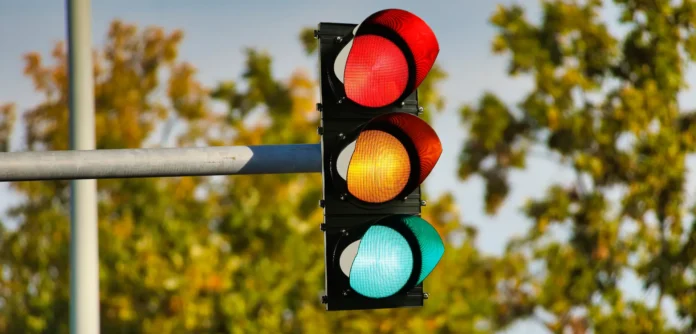The first traffic light design in 1868 blew up in a gas explosion, and the modern design has barely changed in 100 years. Now, self-driving vehicles may need a fourth color.
Early Traffic Light Designs
The world’s first traffic light was installed on December 10, 1868, at Parliament Square in London, UK. Designed to manage the growing congestion of horse-drawn carriages, it featured a pillar with semaphore signaling arms and red and green gas lights. The system, meant to mimic a traffic policeman’s gestures, was short-lived due to a gas explosion.
Evolution and Standardization
The universally known red, amber, and green traffic lights have not seen significant changes since 1921 when William Pott, a Detroit police officer, created the first three-section traffic light in the United States. These lights signal drivers to stop, go, or get ready to either stop or go at intersections and pedestrian crossings.
The Rise of Self-Driving Cars
Experts now argue that the advent of driverless cars necessitates new safety guidelines to ensure they interact correctly with traffic signals. Ali Hajbabaie, an engineering professor at North Carolina State University (NCSU), leads a team working on a traffic system designed to accommodate driverless cars. Hajbabaie suggests adding another light, possibly white, to help manage the interaction between autonomous vehicles and traffic signals.
Benefits of Traffic Signals
Traffic signals contribute significantly to road safety and efficient traffic flow, reducing congestion and its economic impact. According to the 2022 Global Traffic Scorecard by INRIX, road congestion cost the economies of the UK, Germany, and the US a combined $2.2 billion. Effective traffic light systems help minimize this cost by improving traffic flow and reducing time and fuel wastage.
Learning from the Past
The history of traffic lights shows a progression from simple mechanical systems to the sophisticated electronic signals used today. As we move toward a future with more autonomous vehicles, it’s crucial to learn from past innovations and adapt traffic systems to new technological realities.






You have noted very interesting points! ps nice
website.Money from blog